Last Chance to Catch NYC's Holiday Notalgia Train
We met the voices of the NYC subway on our nostalgia ride this weekend!


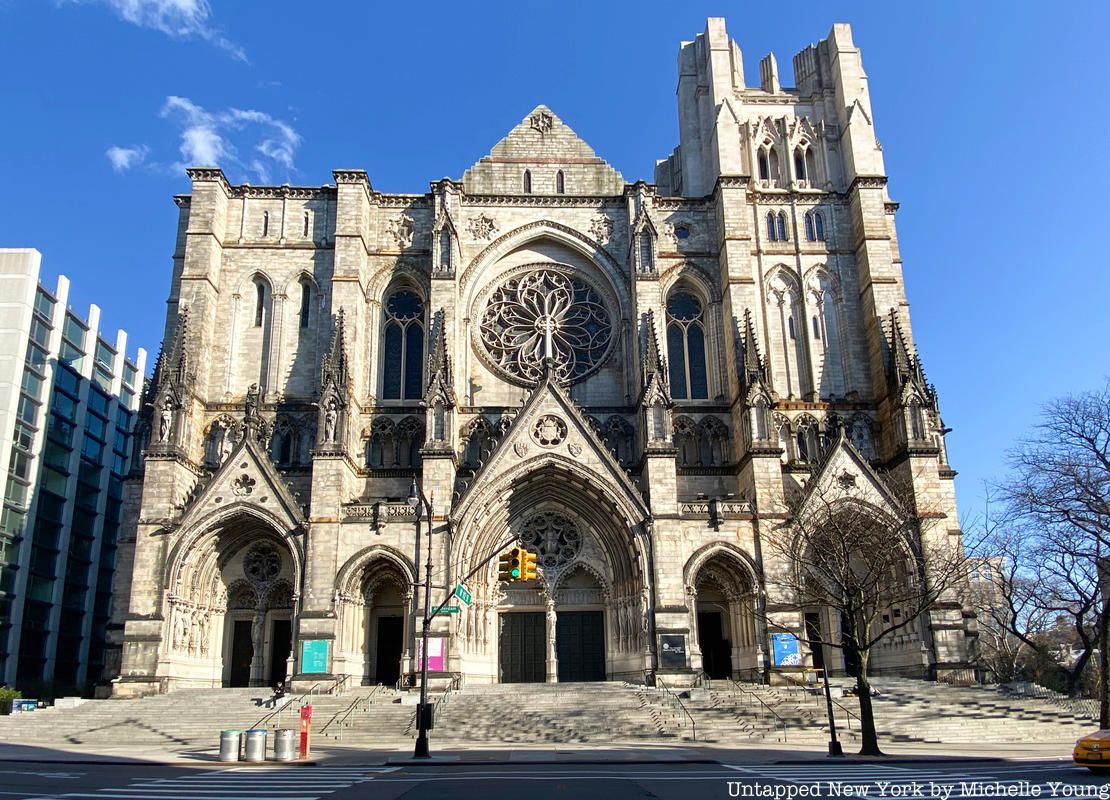 Cathedral of St. John the Divine
Cathedral of St. John the Divine
There is a lot to know about landmarking in New York City. Within New York City, there are 37,000 landmark properties, with 149 historic districts and historic district extensions. It all began in 1965, when the law to enable landmarking was passed by Mayor Robert F. Wagner. The Landmarks Preservation Commission is responsible for protecting New York City’s culturally and historically significant buildings and sites by granting them landmark status.
Most people know that there are separate designations for exterior and interior landmarks, with some buildings having both. Perhaps you know that there are landmark designations at the federal, state, and city level, with varying levels of protection. Yet one surprising thing unbeknownst to most New Yorkers is that landmark designations can be overturned or revoked by City Council. It occurs rarely, but by our count, a few occur every decade. Some have led to subsequent demolitions, a significant loss to the city’s collective architectural and social history.
Here is our guide to past and present significant buildings that have had their landmark designations revoked (and sometimes regained it!), with special thanks to Simeon Bankoff, the Executive Director of the Historic Districts Council, who helped us compile the locations.

Steinway & Sons, the renowned piano manufacturer, was founded in 1853 on the Lower East Side but soon after relocated to Queens in the 1870s. In an effort to keep its factory running smoothly, Steinway & Sons decided to also move its workers and their families and construct a typical “company town.” Henry Steinway acquired 400 acres of land in Queens while his son William helped develop a residential area with housing and transportation.
The neighborhood, named Steinway Village, included 29 two-story red-brick houses in Astoria and was completed in 1875.
According to the New York City Landmarks Preservation Commission’s (LPC) 1974 “Steinway Historic District Designation Report,” the Steinway Historic District “played an important role in the social development of the city.”
On November 26, 1974, the LPC designated the village a historic district, the LPC noting that “there were no speakers in opposition to designation.” Two months later, the City Planning Commission also approved the designation of the Steinway Historic District. Yet soon after, residents began to protest against the designation due to potential restrictions placed on residents with respect to their homes. The LPC failed to inform residents about the consequences of this designation, and on January 23, 1975, the former Board of Estimate nullified the designation of the Steinway Historic District.
This was just the second time that the Board of Estimate revoked a landmark destination. When the Board of Estimate was determined by the U.S. Supreme Court to be an unconstitutional body, its responsibilities were primarily given over to the New York City Council in 1990. The night before its dissolution, the Board of Estate de-designated several buildings within the First Avenue Estate (on First Avenue and York Avenue) due to pressure from the developer who wanted to build a few luxury high-rise buildings there. Those buildings were re-designated in an amendment in 2006, but the legal battle continued until 2019.
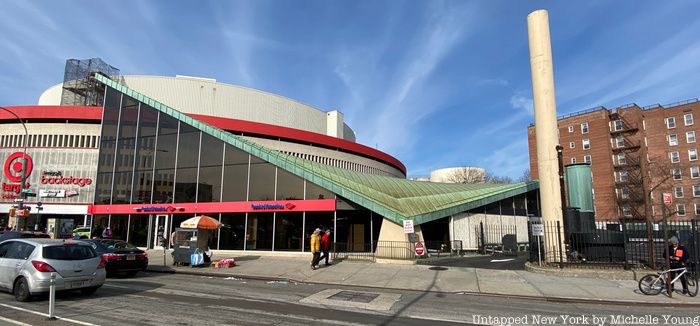
The Jamaica Savings Bank was first opened in 1866 on Jamaica Avenue, but the modern Jamaica Savings Bank was built from 1964 to 1966 at 89-01 Queens Boulevard in Elmhurst. This modernist building was constructed as the bank’s new headquarters and was considered by the LPC as a “bold expression of mid-20th century engineering.” The building comes to a triangle at its corner entrance, which stands 43 feet tall, with two glass facades meeting. Many modernist buildings were built across Queens at locations like Flushing-Meadows Corona Park. Today, the building houses a Bank of America.
The LPC approved the building for landmark designation on June 28, 2005, but just four months later in August, the New York City Council voted to overturn this designation. The owners cited the building’s maintenance issues and tendency to flood, as well as the public’s lack of appreciation for Modernist architecture, as reasons for overturning the designation. There have been recent pushes to re-landmark the former Jamaica Savings Bank by groups such as the Elmhurst History and Cemeteries Preservation Society.
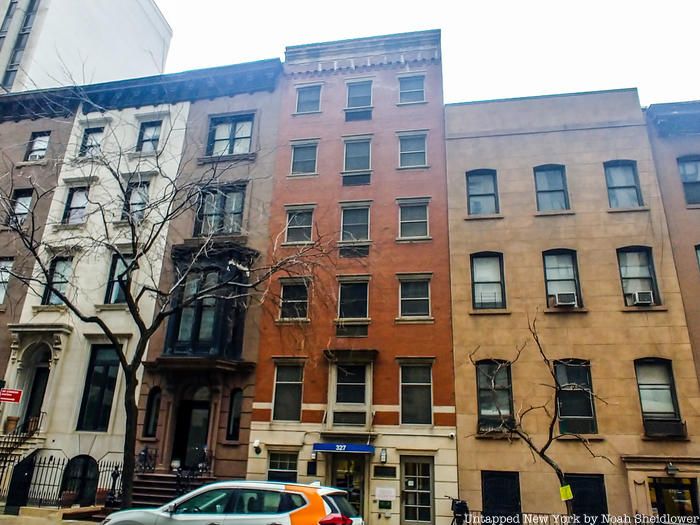 What stands on the site of the former Dvorak House
What stands on the site of the former Dvorak House
The Dvorak House, which served as the home of Czech composer Antonin Dvorak from 1892-1895, was located at 327 East 17th Street near Stuyvesant Square Park. While living here, Dvorak composed his Symphony No. 9 “From the New World,” which integrated Native American and African American music with classical music. Dvorak also served as director of the National Conservatory of Music while in the United States.
On the afternoon of December 13, 1941, Mayor Fiorello LaGuardia and Foreign Minister of Czechoslovakia Jan Masaryk spoke at a dedication ceremony in the house. Due to efforts by many members of the music community, the house was designated a New York City landmark in February of 1991.
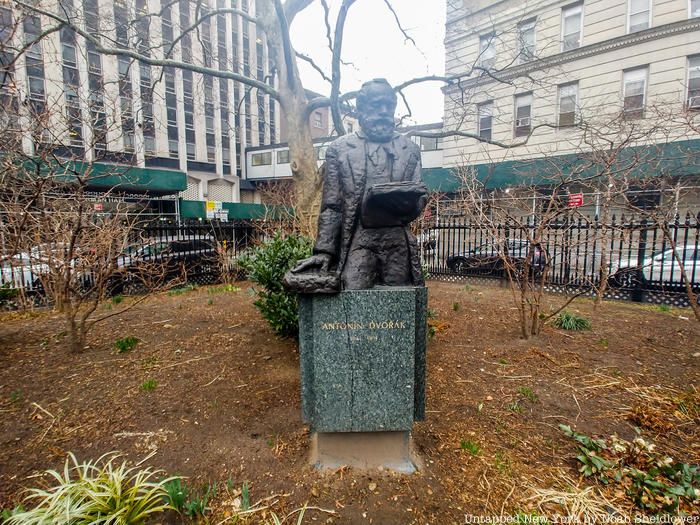 Dvorak Statue in Stuyvesant Square Park
Dvorak Statue in Stuyvesant Square Park
However, Beth Israel Medical Center purchased the house in 1989 and planned to demolish it to build an AIDS hospice center. The New York City Council reversed the LPC’s designation and the hospice center was soon after built. In 1997, a statue commemorating Dvorak’s contributions to American music was placed in Stuyvesant Square Park. According to a New York Times article, “The monument is not a substitute for the Dvorak house, but it is, finally, a recognition of the genius that house sheltered and nourished and the greatness that poured from it.”
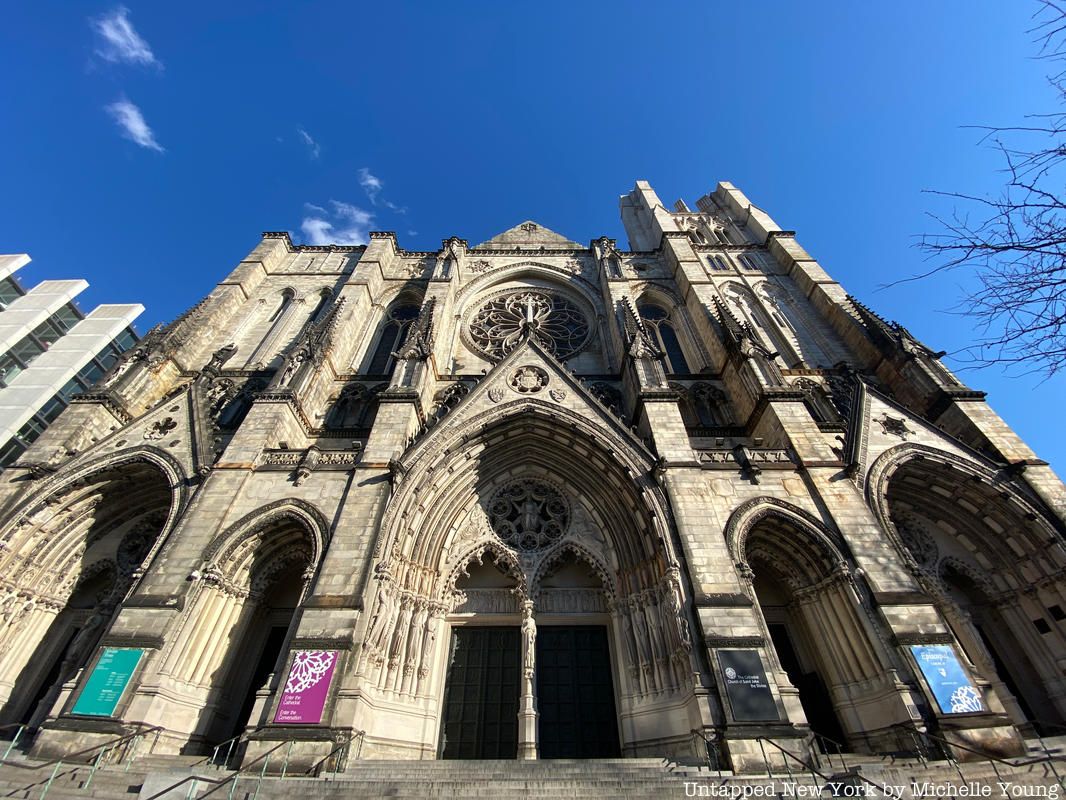 Cathedral of St. John the Divine
Cathedral of St. John the Divine
The Cathedral of St. John the Divine in Morningside Heights has had a very complicated history with regards to becoming a landmark. The Episcopal cathedral, which to this day is still unfinished, was constructed starting in 1892 in the Gothic Revival style. Despite being incomplete, it is considered the largest cathedral in the world — meaning a church that is also the seat of a bishop.
Starting in 1966, the cathedral was considered for landmark designation by the Landmarks Preservation Commission, but because the cathedral’s structure was incomplete, the trustees wanted to wait until the cathedral was complete. Its north transept was never completed, nor its dome. In 1921, it was estimated that it would take 700 years to complete the cathedral, since it was to be completed using only traditional Gothic methods of construction.
In 2002, the LPC designated the exterior of the Cathedral but it was overturned in 2003 by the City Council, which followed the same reasoning — the vain hope that designation could include the entire cathedral close (the immediate area surrounding the cathedral). Had the designation stuck, the LPC would have had the opportunity to review every proposed major expansion afterward.
In 2017, the cathedral and six other buildings on the grounds were re-designated as landmarks, but in the intervening years two new residential buildings were built on the site, barring any possibility for the cathedral to ever be completed to its original design. Furthermore, the cathedral and close have undergone a great deal of construction and restoration since 2017. In 2019, the LPC considered proposals to preserve and rehabilitate the cathedral’s ceiling. Additionally, a fire occurred on Palm Sunday in 2019 at the cathedral, which destroyed oil paintings and left soot everywhere, including damage in the unfinished crypt which housed artist studios.
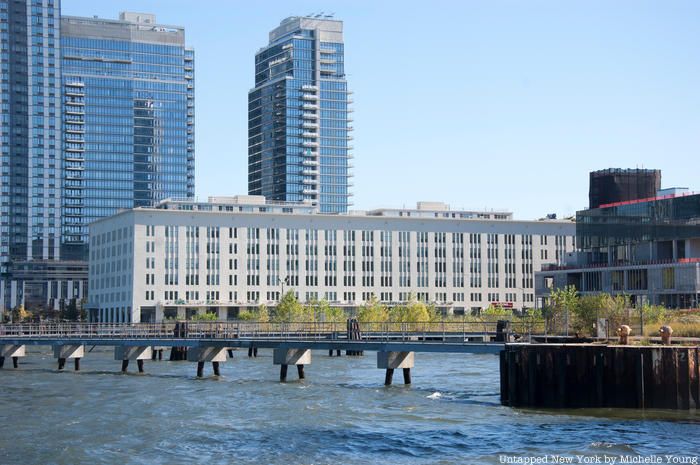
Also known as 184 Kent Avenue, the Austin, Nichols & Co. Warehouse Building is a building designed by architect Cass Gilbert in Williamsburg, Brooklyn. Built in 1914-1915 in the Egyptian revival style, the building was leased to Austin, Nichols & Company, one of the world’s largest grocery wholesalers of the time. Starting in the 2000s, however, the building was converted into a residential space. Gilbert is best known for designing works like the Woolworth Building and the United States Supreme Court Building.
In September 2005, the LPC gave the building official landmark status, yet Louis Kestenbaum, a real estate developer who leases the building out as apartments, opposed the designation. The Kestenbaum family considered the building an “eyesore” while New York City Councilman David Yassky called it a “nondescript white box.”
In November 2005, a majority of City Council members voted to overturn the designation, some members advocating for the building’s destruction in favor of something nicer. Although Mayor Michael Bloomberg vetoed the vote in December 2005, the City Council overrode his veto. The building was listed on the National Register of Historic Places soon after and is protected by preservation easements.
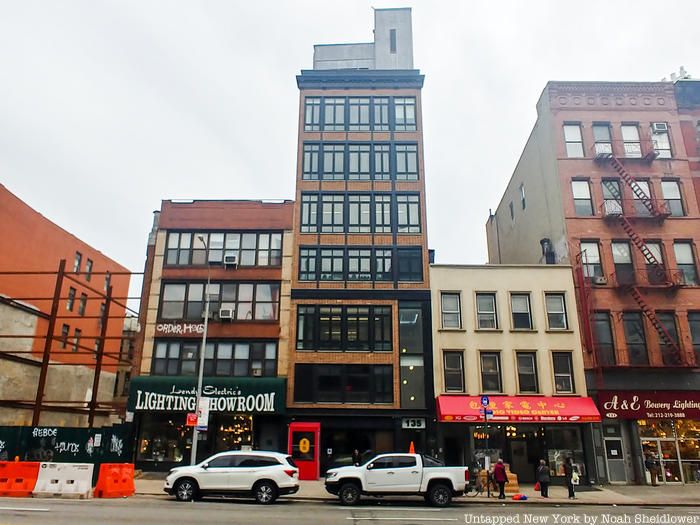 The new 135 Bowery
The new 135 Bowery
135 Bowery, which was demolished in 2012, failed to gain landmark status by the Landmarks Preservation Commission. There have been many efforts recently to protect many buildings in the Bowery area of the Lower East Side. The area’s complex history dates all the way back to the middle of the 17th century. By the early 1800s, many buildings like the Bowery Theatre opened in the area, and Bowery has been undergoing extensive redevelopment since the 1990s.
The Federal-style building that once stood at 135 Bowery was constructed in 1819 for John A. Hardenbrook, who owned a soap and candle manufacturing store. The building received alterations in 1903 and 1920, but much of the original building remained intact. In June 2011, the LPC, with the help of City Council Member Margaret Chin, designated 135 Bowery a New York landmark. However, Chin changed her stance in September 2011 at the urging of the First American International Bank. The bank owners noted how the building was leaky and old and that a new building would offer much more affordable office space. The building was demolished in 2012, alongside nearby 138-142 Bowery in 2016 (which became the now-former location of the International Center of Photography) and 185 Bowery in 2010.
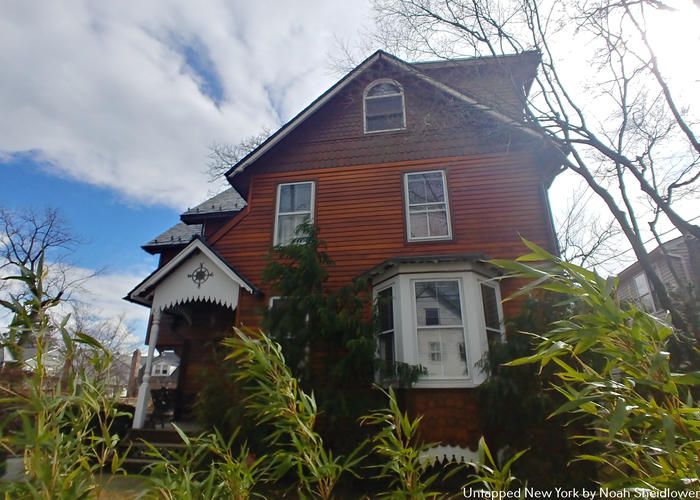
Samuel H. and Mary T. Booth House
The Samuel H. & Mary T. Booth House on City Island in the Bronx was built from 1887-1893 by prolific City Island contractor Samuel Booth, who lived in the house until 1959. The House was built in the Stick architectural style, featuring decorative wood trim, asymmetrical massing, and a gabled roof among other features. The house underwent minor renovations in the mid-1980s.
In November 2017, this and another house on City Island were declared New York landmarks since both “illustrate the history and development of City Island as a suburban community” according to former LPC Chair Meenakshi Srinivasan. However, on March 12, 2018, both houses were stripped of their landmark designation by the New York City Council since the owners were reported to have objected to their designations
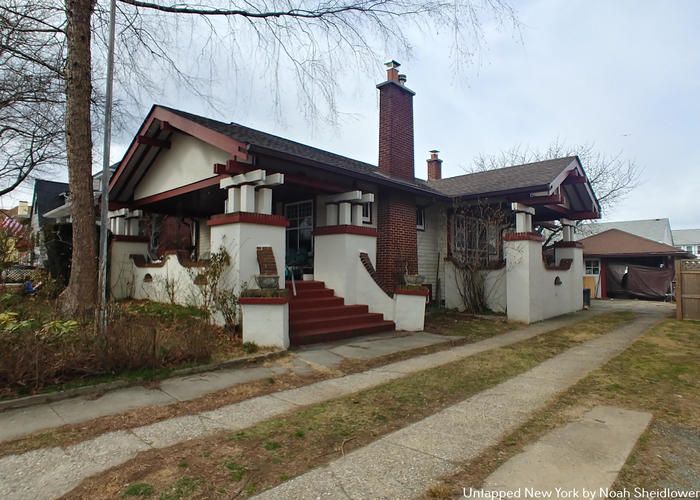
Stafford “Osborn” House
The nearby Stafford House was built in 1930 for Captain John H. Stafford, who was a well-known member of City Island’s maritime community. The house has remained unchanged since its original construction. The house exemplifies the Sears “mail order” house, more than 70,000 of which were sold in North America between 1908 and 1940. The Stafford House was an “Osborne” model, which featured timberwood columns, open porches, and shingle siding.
The Stafford House was de-designated along with the Booth House on City Island in 2017. Simeon Bankoff, Executive Director of the Historic Districts Council Preservation expressed frustration at this decision by asking in an article for New York History Blog, “Why would the Landmarks Commission waste its limited resources on this community with the foreknowledge that the Councilmember will most likely veto their decision if the owner doesn’t actively desire it?”
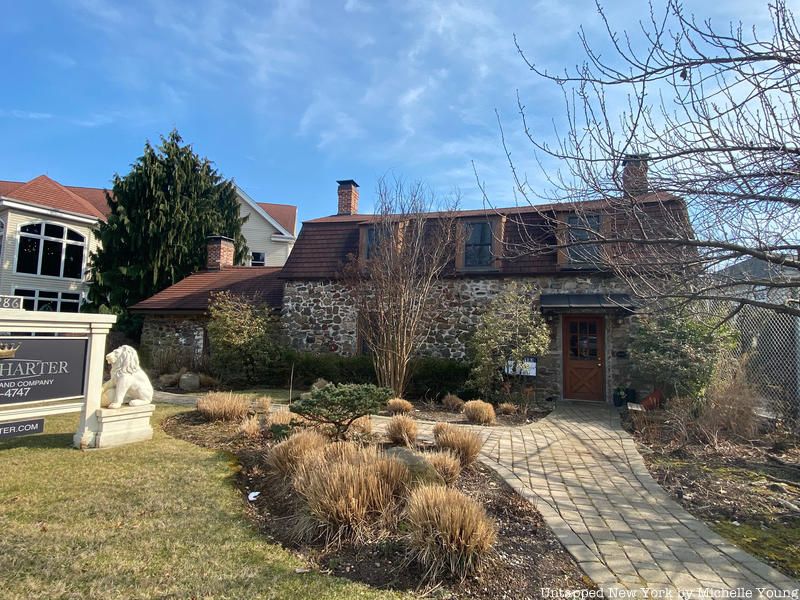
The Lakeman-Cortelyou-Taylor House in the New Dorp neighborhood of Staten Island at 2286 Richmond Road dates back to the late 1600s and is characteristic of the Dutch colonial style of architecture. The land on which the house is situated was granted to Lewis Lakeman in 1675, and it is believed that his son Abraham Lakeman built much of the house around 1683.
A man named Peter Cortelyou of Kings County came into possession of the property for a short time in the early 1700s, and in 1751, a man named Aaron Cortelyou purchased the property and gave it to his daughter. The house was then sold to its third namesake Joseph Taylor in 1794.
The house was designated a New York landmark in December 2016, but by March 2017 this decision was overturned, likely due to the house’s owner choosing not to have the house landmarked among increased and potentially burdensome maintenance costs. It has been the office of the Cyrus Charter Land Company, a real estate management company. However, as of our visit on Monday, the house had a for sale sign putting the future of this historic house in potential jeopardy.
Next, check out this in-depth look at the quest to save the Jamaica Savings Bank!
Subscribe to our newsletter